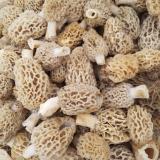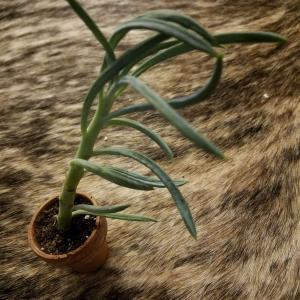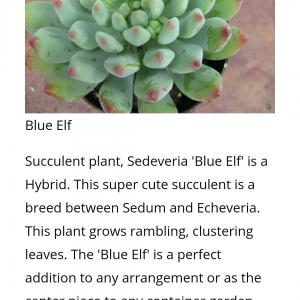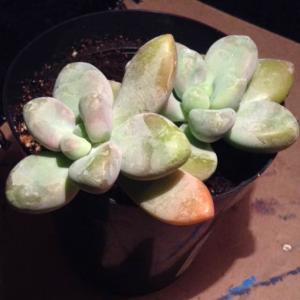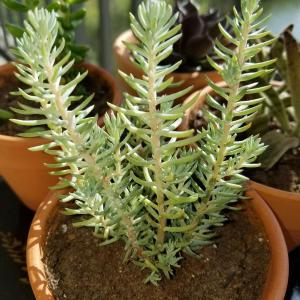成长记
Succulent wonderland
2017年11月15日

I now added "Echeveria ‘Powder Blue’ – White Rose Echeveria" in my "garden"


1
0
成长记
Andrew Wilson
2017年10月23日

I now added "senecio mandraliscae "blue chalk sticks"" in my "garden"
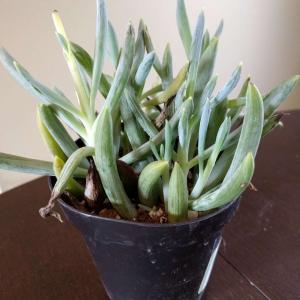

0
0
文章
Dummer. ゛☀
2017年10月08日

There is enough diversity in the bellflower or Campanula clan to ring just about any gardener's chimes. With bell-shaped, tubular or star-shaped flowers in shades of blue, white, pink and red, they have growth habits that range from low and creeping to tall and upright. Most of the garden-worthy choices are perennials, although there are some annuals and a biennial in the genus. And all are beautiful, even the few that are such vigorous spreaders and seeders that you may need to think twice about including them in your garden.

About bellflowers
Bellflowers are hardy plants, with most types growing in Zones 4 to 8, even to zone 3 with reliable snow cover to provide insulation, but they'll sulk in the heat of the Deep South or Southwest. Peak bloom is in early to midsummer for most, but with deadheading you may get sporadic bloom throughout the summer and a second flush of flowers in fall. Bellflowers look lovely in many garden settings; their showy flowers and informal habit are the perfect fit in a cottage garden.
Special features of bellflowers
Bellflowers fall into two categories, tall, upright growers that are good choices for a border or for cutting, and low growers that work well for edging or in rock gardens.
One of the most popular uprights is Peach Leaved Bellflower (Campanula persicifolia). Tall, 15 to 30 inch spikes of 1-1.5 inch, broadly bell-shaped flowers in shades of blue, pink, white and purple rise in early summer from basal clumps of leaves. Clustered bellflower (C. glomerata) produces upwards facing heads of blossoms in purple or white in early summer on sturdy 18 inch stems. Milky bellflower (C. lactiflora), 3 to 5 feet tall, and great bellflower (C. latifolia), 4 to 5 feet tall, also both have upward-facing flowers.
Other upright growers are distinguished by their large, nodding blossoms. Spotted bellflower (C. punctata) gets about 2 feet tall and bears pink, speckled, dangling flowers from midsummer to fall. 'Cherry Bells' is a popular cultivar. The hybrid 'Sarastro' has large, deep-purple, nodding bells on a 2.5 to 3 foot tall plant.
The low spreading bellflowers look nice trailing over the tops and between the stones of a dry rock wall. In early summer, Serbian Bellflower (C. poscharskyana) spreads a wave of blue, 1-1", star-shaped flowers. Adriatic bellflower (C. garganica) and Dalmatian bellflower (C. portenschlagiana) are similar. For edging along a path, the low growing Carpathian harebell (C. carpatica) is perfect. The cultivar 'Blue Clips' bears bright blue bells on 8-12" high plants over most of the summer. Even more floriferous is the sterile hybrid 'Samantha', which is covered in violet-blue, bowl-shaped blossoms above a 6" high clump of leaves.
The biennial Canterbury bells (C. medium) is an old fashioned favorite, growing 12 to 30 inches tall and sporting boxy, bell-shaped flowers in shades of lilac, blue, pink and white. Start these plants from seed in midsummer for bloom the following year.

Choosing a site to grow bellflowers
Most bellflowers do best if planted in full sun, but will also thrive in light shade. Plant in moist, well-drained soil that is high in organic matter. Some are spreaders, especially clustered bellflower and Serbian bellflower, so plant these where they'll have some room to roam. But steer clear of the aggressive Korean bellflower (C. rapunculoides) which spreads so readily, it can become invasive.
Planting Instructions
Container plants can be set out any time during the growing season. Space most plants about a foot apart; the tall milky bellflower should have 24 inch spacing. Prepare the garden bed by using a garden fork or tiller to loosen the soil to a depth of 12 to 15 inches, then mix in a 2- to 4-inch layer of compost. Dig a hole twice the diameter of the pot the plant is in. Carefully remove the plant from its container and place it in the hole so the top of the root ball is level with the soil surface. Carefully fill in around the root ball and firm the soil gently. Water thoroughly.

Ongoing Care
Apply a complete organic fertilizer and a thin layer of compost each spring, followed by a 2-inch layer of mulch to retain moisture and control weeds. Water plants during the summer if rainfall is less than 1 inch per week. Deadhead flowers to neaten plants and prevent self-sowing. On taller types, remove faded flowers individually, then cut back the flowering stalks to the base when all bloom is finished. With low growers, wait until the first flush of bloom is past, then shear back plants by half. Peachleaf bellflower can self-sow to the point of weediness if not deadheaded. Most bellflowers benefit from division every 3 to 5 years to keep them growing vigorously.

About bellflowers
Bellflowers are hardy plants, with most types growing in Zones 4 to 8, even to zone 3 with reliable snow cover to provide insulation, but they'll sulk in the heat of the Deep South or Southwest. Peak bloom is in early to midsummer for most, but with deadheading you may get sporadic bloom throughout the summer and a second flush of flowers in fall. Bellflowers look lovely in many garden settings; their showy flowers and informal habit are the perfect fit in a cottage garden.
Special features of bellflowers
Bellflowers fall into two categories, tall, upright growers that are good choices for a border or for cutting, and low growers that work well for edging or in rock gardens.
One of the most popular uprights is Peach Leaved Bellflower (Campanula persicifolia). Tall, 15 to 30 inch spikes of 1-1.5 inch, broadly bell-shaped flowers in shades of blue, pink, white and purple rise in early summer from basal clumps of leaves. Clustered bellflower (C. glomerata) produces upwards facing heads of blossoms in purple or white in early summer on sturdy 18 inch stems. Milky bellflower (C. lactiflora), 3 to 5 feet tall, and great bellflower (C. latifolia), 4 to 5 feet tall, also both have upward-facing flowers.
Other upright growers are distinguished by their large, nodding blossoms. Spotted bellflower (C. punctata) gets about 2 feet tall and bears pink, speckled, dangling flowers from midsummer to fall. 'Cherry Bells' is a popular cultivar. The hybrid 'Sarastro' has large, deep-purple, nodding bells on a 2.5 to 3 foot tall plant.
The low spreading bellflowers look nice trailing over the tops and between the stones of a dry rock wall. In early summer, Serbian Bellflower (C. poscharskyana) spreads a wave of blue, 1-1", star-shaped flowers. Adriatic bellflower (C. garganica) and Dalmatian bellflower (C. portenschlagiana) are similar. For edging along a path, the low growing Carpathian harebell (C. carpatica) is perfect. The cultivar 'Blue Clips' bears bright blue bells on 8-12" high plants over most of the summer. Even more floriferous is the sterile hybrid 'Samantha', which is covered in violet-blue, bowl-shaped blossoms above a 6" high clump of leaves.
The biennial Canterbury bells (C. medium) is an old fashioned favorite, growing 12 to 30 inches tall and sporting boxy, bell-shaped flowers in shades of lilac, blue, pink and white. Start these plants from seed in midsummer for bloom the following year.

Choosing a site to grow bellflowers
Most bellflowers do best if planted in full sun, but will also thrive in light shade. Plant in moist, well-drained soil that is high in organic matter. Some are spreaders, especially clustered bellflower and Serbian bellflower, so plant these where they'll have some room to roam. But steer clear of the aggressive Korean bellflower (C. rapunculoides) which spreads so readily, it can become invasive.
Planting Instructions
Container plants can be set out any time during the growing season. Space most plants about a foot apart; the tall milky bellflower should have 24 inch spacing. Prepare the garden bed by using a garden fork or tiller to loosen the soil to a depth of 12 to 15 inches, then mix in a 2- to 4-inch layer of compost. Dig a hole twice the diameter of the pot the plant is in. Carefully remove the plant from its container and place it in the hole so the top of the root ball is level with the soil surface. Carefully fill in around the root ball and firm the soil gently. Water thoroughly.

Ongoing Care
Apply a complete organic fertilizer and a thin layer of compost each spring, followed by a 2-inch layer of mulch to retain moisture and control weeds. Water plants during the summer if rainfall is less than 1 inch per week. Deadhead flowers to neaten plants and prevent self-sowing. On taller types, remove faded flowers individually, then cut back the flowering stalks to the base when all bloom is finished. With low growers, wait until the first flush of bloom is past, then shear back plants by half. Peachleaf bellflower can self-sow to the point of weediness if not deadheaded. Most bellflowers benefit from division every 3 to 5 years to keep them growing vigorously.
1
0
文章
Dummer. ゛☀
2017年10月08日

Theese tough, dependable, long-lived perenniaal make an impressive statement in the garden, growing as much as 3 to 4 feet tall. The most common species found in gardens baptisia, also known as blue wild indigo, has spires of blue flowers in late spring and early summer and was used by early American colonists as a dye plant. But other species and hybrids bloom in a wide variety of colors.

About baptisias
Baptisias are native to the central and southeastern U.S. In spring and early summer, their clover-like foliage is topped by spires of pea-like blooms. Baptisias grow slowly at first, but after a few years forms an attractive, upright mound up to 4 feet across. A mass planting of baptisia in full bloom is a striking sight. Both the flowers and the seed pods are attractive in bouquets. Hardiness varies with species, but most grow well in Zones 5-8.
Choosing a site to grow baptisias
Baptisias do best in full sun and well-drained soil of average fertility. If planted in part shade they may need staking to prevent sprawling. Once established, they are reasonably drought tolerant.

Planting Instructions
Container plants can be set out any time during the growing season. Space most plants at least 3 feet apart. Mature plants can be 4 feet wide and resent disturbance, so give young plants plenty of space to grow into. Prepare the garden bed by using a garden fork or tiller to loosen the soil to a depth of 12 to 15 inches, then mix in a 2- to 4-inch layer of compost. Dig a hole twice the diameter of the pot the plant is in. Carefully remove the plant from its container and place it in the hole so the top of the root ball is level with the soil surface. Carefully fill in around the root ball and firm the soil gently. Water thoroughly.
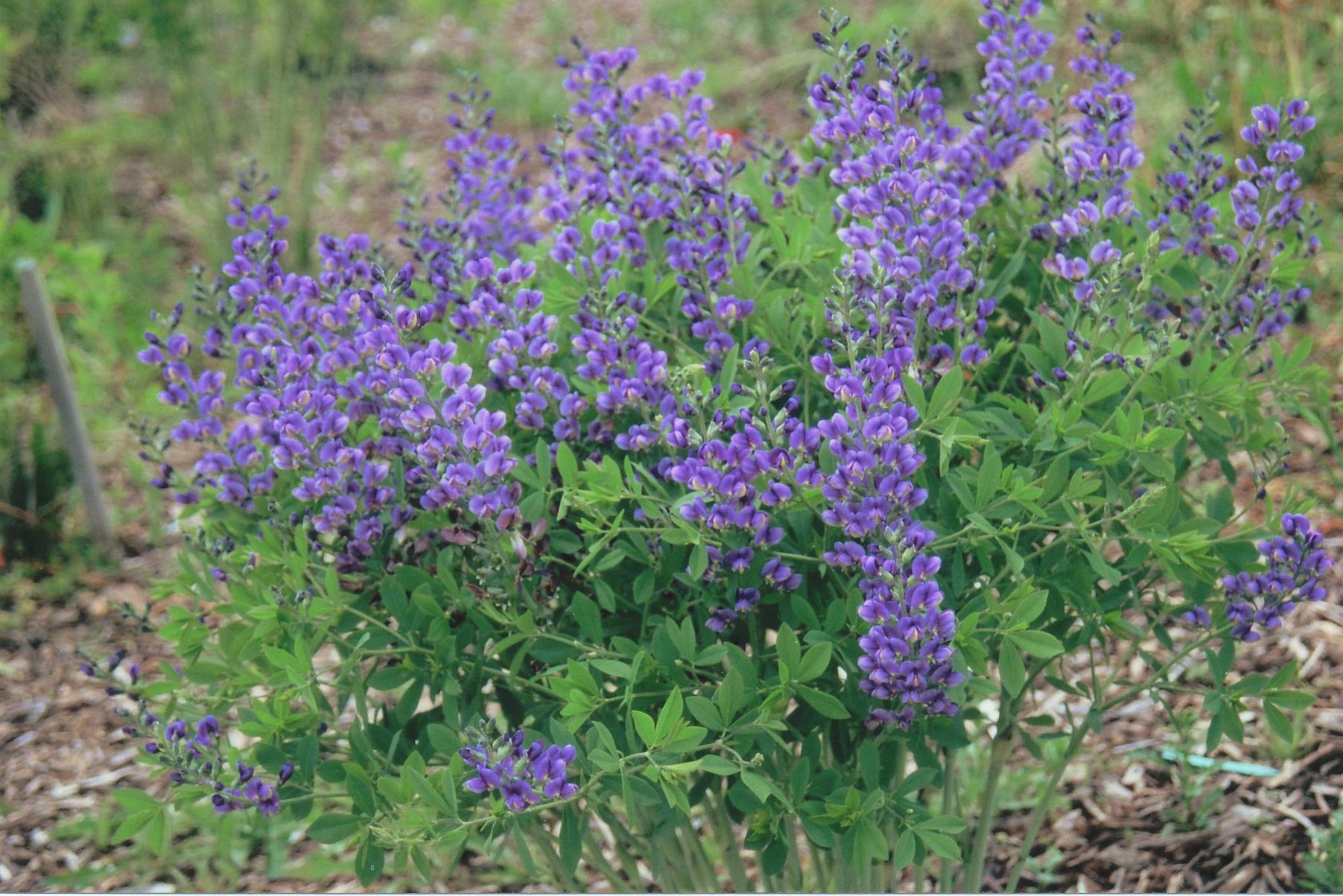
Ongoing Care
Baptisia forms a deep taproot, making it difficult to transplant, so choose the planting site carefully. Unlike many other perennials, baptisia clumps don't need dividing. Although it's possible to divide the deep, gnarly root mass, it's risky and you may end up damaging the plant so much that it can't recover. If you want more plants you can propagate them by seed or cuttings. Baptisias have few insect and disease problems and are usually ignored by deer.

About baptisias
Baptisias are native to the central and southeastern U.S. In spring and early summer, their clover-like foliage is topped by spires of pea-like blooms. Baptisias grow slowly at first, but after a few years forms an attractive, upright mound up to 4 feet across. A mass planting of baptisia in full bloom is a striking sight. Both the flowers and the seed pods are attractive in bouquets. Hardiness varies with species, but most grow well in Zones 5-8.
Choosing a site to grow baptisias
Baptisias do best in full sun and well-drained soil of average fertility. If planted in part shade they may need staking to prevent sprawling. Once established, they are reasonably drought tolerant.

Planting Instructions
Container plants can be set out any time during the growing season. Space most plants at least 3 feet apart. Mature plants can be 4 feet wide and resent disturbance, so give young plants plenty of space to grow into. Prepare the garden bed by using a garden fork or tiller to loosen the soil to a depth of 12 to 15 inches, then mix in a 2- to 4-inch layer of compost. Dig a hole twice the diameter of the pot the plant is in. Carefully remove the plant from its container and place it in the hole so the top of the root ball is level with the soil surface. Carefully fill in around the root ball and firm the soil gently. Water thoroughly.

Ongoing Care
Baptisia forms a deep taproot, making it difficult to transplant, so choose the planting site carefully. Unlike many other perennials, baptisia clumps don't need dividing. Although it's possible to divide the deep, gnarly root mass, it's risky and you may end up damaging the plant so much that it can't recover. If you want more plants you can propagate them by seed or cuttings. Baptisias have few insect and disease problems and are usually ignored by deer.
1
1
文章
Dummer. ゛☀
2017年10月02日

Scientific Name
Helleborus lividus Aiton ex Curtis

Common Names
Majorcan Hellebore, Blue-Grey Hellebore, Purple Hellebore, Lenten Rose, Livid Lenten Rose
Synonyms
Helleborus trifolius subsp. lividus, Helleborus trifolius var. lividus, Helleborus triphyllus
Scientific Classification
Family: Ranunculaceae
Subfamily: Ranunculoideae
Tribe: Helleboreae
Genus: Helleborus

Flower
Color: Pinkish-green
Bloom Time: Midwinter to early spring
Description
Helleborus lividus is an evergreen perennial up to 18 inches (45 cm) tall and up to 12 inches (30 cm) wide, with biennial stems and deep green or bluish green, glossy leaves. The flowers are pinkish-green, up to 2 inches (5 cm) wide, borne in open clusters from midwinter to early spring.

How to Grow and Care
When planting from seed or division, place the Hellebore into well-draining, organic soil in a filtered sun or shady location. The Hellebore plant will return for many years; make sure the space will accommodate growth and has proper sunlight.
Hellebores need no more than a few hours of dappled light and grow successfully in shady areas. Plant the Hellebore under deciduous trees or scattered through a woodland garden or shaded natural area.
Soaking the soil in which the Hellebore is growing helps the Hellebore plant to look its best. Hellebore care includes removal of older leaves when they appear damaged. Care for Hellebores should also include careful fertilization. Too much nitrogen may result in lush foliage and a shortage of blooms.
Plant Hellebore seeds in the fall. A 60-day moist chilling period is needed when planting seeds of the Hellebore plant. Planting seed in fall allows this to happen naturally in areas with cold winters. Wait three to four years for blooms on young plants grown from seed. Divide overgrown clumps in spring, after flowering or in autumn.
Origin
Native to Majorca and possibly nearby Cabrera, Spain.
Helleborus lividus Aiton ex Curtis

Common Names
Majorcan Hellebore, Blue-Grey Hellebore, Purple Hellebore, Lenten Rose, Livid Lenten Rose
Synonyms
Helleborus trifolius subsp. lividus, Helleborus trifolius var. lividus, Helleborus triphyllus
Scientific Classification
Family: Ranunculaceae
Subfamily: Ranunculoideae
Tribe: Helleboreae
Genus: Helleborus

Flower
Color: Pinkish-green
Bloom Time: Midwinter to early spring
Description
Helleborus lividus is an evergreen perennial up to 18 inches (45 cm) tall and up to 12 inches (30 cm) wide, with biennial stems and deep green or bluish green, glossy leaves. The flowers are pinkish-green, up to 2 inches (5 cm) wide, borne in open clusters from midwinter to early spring.

How to Grow and Care
When planting from seed or division, place the Hellebore into well-draining, organic soil in a filtered sun or shady location. The Hellebore plant will return for many years; make sure the space will accommodate growth and has proper sunlight.
Hellebores need no more than a few hours of dappled light and grow successfully in shady areas. Plant the Hellebore under deciduous trees or scattered through a woodland garden or shaded natural area.
Soaking the soil in which the Hellebore is growing helps the Hellebore plant to look its best. Hellebore care includes removal of older leaves when they appear damaged. Care for Hellebores should also include careful fertilization. Too much nitrogen may result in lush foliage and a shortage of blooms.
Plant Hellebore seeds in the fall. A 60-day moist chilling period is needed when planting seeds of the Hellebore plant. Planting seed in fall allows this to happen naturally in areas with cold winters. Wait three to four years for blooms on young plants grown from seed. Divide overgrown clumps in spring, after flowering or in autumn.
Origin
Native to Majorca and possibly nearby Cabrera, Spain.
0
0




